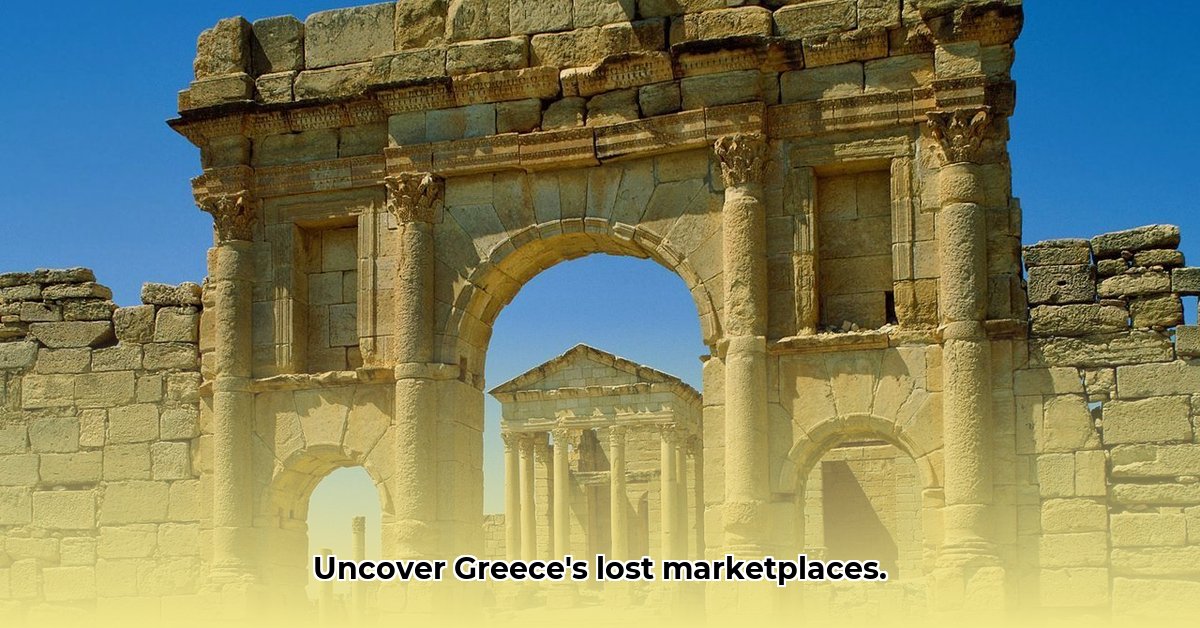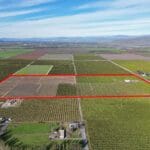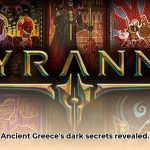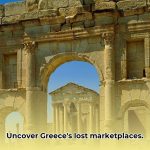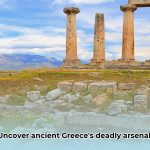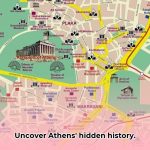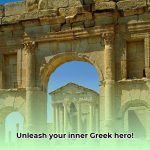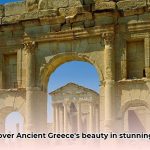Ever wonder what the heart of an ancient Greek city was really like? Forget dusty museums – imagine a bustling marketplace where everyone met, gossiped, bought and sold, and even decided who would rule! That’s the agora. It wasn’t just a shopping center; it was the social media, town hall, and even the religious center of its day, all rolled into one lively square. This story takes you back in time to explore this amazing place, comparing it to its Roman counterpart, the forum, and showing how it shaped ancient Greek life. We’ll uncover its secrets, from everyday business deals to the big political events that changed history, and even how its clever design is still influencing city planning today. Get ready for a fascinating journey through time! To learn more about the location of ancient Greek cities, check out this Ancient Greece map.
Ancient Greece Marketplace: Unveiling Agora’s Timeless Allure
More Than Just a Market: Discovering the Ancient Greek Agora
Picture this: a bustling square filled with sounds – the chatter of merchants, the clang of a blacksmith’s hammer, the bleating of goats. That’s the ancient Greek agora – a vibrant, open space that was much more than just a marketplace. It was the beating heart of Greek city life, a dynamic blend of commerce, politics, religion, and social life all rolled into one. It wasn’t simply a place to buy bread or a new vase; it was where democracy sprouted and ideas took flight, shaping the course of ancient civilization. The agora influenced art, philosophy, and theater as well.
Unlike many ancient marketplaces walled off from the rest of life, the agora was open and accessible to everyone. Temples stood shoulder to shoulder with busy stalls, political rallies burst forth between haggling over prices, and festivals celebrated amidst the everyday hustle and bustle. The design itself encouraged interaction—imagine the chance encounters, the unexpected conversations, and the spontaneous gatherings. This unique blend of activities is what made the agora so special, fostering a sense of shared community and civic engagement. City-states like Athens and Corinth saw their agoras as symbols of their identity and power.
A Day in the Life: Exploring the Agora’s Commercial Activities
Let’s transport ourselves back in time and imagine strolling through the agora. The air is thick with the scents of spices, olives, and leather. Potters proudly display their latest creations, while a perfumer tempts passersby with exotic fragrances. A blacksmith rhythmically strikes his hammer, the rhythmic clang a constant soundtrack. Merchants from far-off lands boast colorful silks and intriguing trinkets. Hear snippets of conversations—gossip, news, political debates, and philosophical discussions all blending together. It was a place where information spread like wildfire, similar to modern social networks, connecting people and ideas across the city and beyond. Agricultural goods like grain and produce were staples, alongside manufactured items such as tools and clothing.
It is also important to note that women played a vital, though often less visible, role. While men dominated public speaking and formal political life, women actively managed family finances, purchased goods, and participated in the daily marketplace activities. Their contributions were integral to the agora’s functioning, even if their voices were sometimes quieter than the boisterous men, showcasing the complexities of gender roles in ancient Greek society. Women’s presence helped drive commerce and shaped the social landscape.
The Agora: Cradle of Governance and Evolving Democracy
Many believe the agora played a crucial role in the development of democracy in ancient Greece. Its open and inclusive nature fostered a sense of community and participation. It was a place where citizens, regardless of their social standing, could voice their opinions, debate policies, and directly influence their city’s governance. Figures like Cleisthenes and Pericles championed reforms that made it more accessible.
This constant exchange of ideas, some scholars believe, helped shape the foundations of democratic principles that we still value today. It’s a truly remarkable connection—the bustling marketplace as a birthplace of democracy itself, highlighting the enduring legacy of ancient Greek political thought and civic engagement. The agora facilitated discussions on governance, economic policies, and social issues. Ostracism, a process of temporary exile, was often debated and decided upon in the agora.
Marketplace Economics: Understanding Greek Social Standing
The agora wasn’t just a social hub; it formed the backbone of the ancient Greek economy. It facilitated the exchange of both locally produced goods and exotic imports from across the Mediterranean. The agora‘s success fueled economic growth and significantly influenced social hierarchies. Successful merchants amassed wealth and power, shaping the city’s prosperity. However, the agora also reflected the inequalities of the time. Enslaved people performed much of the manual labor, their contributions largely unseen in historical records. The agora served as a microcosm of society, revealing both its dynamism and its inherent contradictions. Economic theories about supply and demand were implicitly understood and practiced within the agora.
The Agora’s Legacy: Integration of Spaces
The impact of the ancient Greek agora extends far beyond antiquity. Its design and function continue to inspire urban planning today. Many modern public squares and plazas echo the agora‘s spirit of open community spaces where commerce and social interaction intertwine. The integration of economic activity and civic engagement is a concept that remains relevant, demonstrating the enduring legacy of this ancient marketplace. The next time you find yourself in a bustling town square, remember its ancient counterpart—the vibrant and dynamic agora. Its spirit and ideas live on in these inclusive environments, enabling local economic vibrancy. The concept of “placemaking” emphasizes creating spaces that foster community, reflecting the agora’s core principles.
Agora vs Roman Forum: Ancient Public Spaces Compared
It’s interesting to compare the Greek agora with the Roman Forum. While both were important public spaces, they differed significantly in their primary functions and social dynamics.
| Feature | Ancient Greek Agora | Roman Forum |
|---|---|---|
| Primary Function | Social and commercial hub, democratic engagement | Political and administrative center, hierarchical |
| Physical Layout | Open, fluid, integrated with religious spaces | More structured, with distinct buildings and areas |
| Social Dynamics | Participatory democracy, open discourse | Hierarchical authority, controlled public space |
| Religious Influence | Strong presence of temples and religious activity | Religious activity present, but less central |
The study of the ancient Greek agora is ongoing, with new discoveries constantly refining our understanding. While many aspects are clear, much remains unknown or subject to different interpretations. This enduring mystery is part of what makes it so fascinating, inviting us to further explore this essential element of ancient Greek civilization and its lasting influence on the world. Ongoing archaeological digs continue to reveal more about daily life and governance in the Agora.
Gender and Social Class: Social Dynamics of the Agora
Stepping into an ancient Greek agora was like stepping into a vibrant, bustling city within a city. But who was truly at home in this lively hub? The answer, surprisingly complex, hinges on both gender and social standing.
Unveiling the Complex Social Dynamics
The agora wasn’t merely a marketplace; it was the beating heart of ancient Greek civic life. Imagine a sprawling open space, a dynamic blend of commerce, politics, and social interaction. Here, citizens conducted business, debated politics, and engaged in religious rituals. It was a stage for daily life, a canvas painted with the vibrant hues of Athenian society. Religious festivals like the Panathenaia brought together people from all social classes.
But this vibrant scene wasn’t equally accessible to everyone. The social dynamics of ancient Greek agoras differed substantially based on gender and social class, which reveals much about the social structure of ancient Greece. Consider the agora as a mirror reflecting inequalities and power dynamics in ancient Greek society. Legal codes and social customs reinforced these divisions.
Gender Roles: Limited Access for Women
For women, the agora presented a different experience. While they participated in the economic aspects – buying goods, selling crafts – their presence was largely constrained. They didn’t participate in the formal political debates that dominated the male sphere, but were mostly confined to the fringes of the marketplace. Women also played a role in religious ceremonies held at the agora.
Think of it as two separate but overlapping worlds within the agora. Men held center stage in the political discussions and civic assemblies, creating a more visible presence. Women, while economically active, occupied a more peripheral space, their voices less amplified in the public sphere. Their interactions were more often confined to their immediate social circles. Certain religious ceremonies and festivals allowed women more participation; women played critical roles in the broader economic fabric of the agora. The writings of historians like Xenophon provide insights into the lives of women in ancient Greece.
Class and Status: A Hierarchical Marketplace
Social class also heavily influenced how one experienced the agora. Wealthy citizens often held prominent positions within the marketplace, perhaps owning stoas (covered walkways) or operating larger businesses. They held more influence in the political discussions and enjoyed greater visibility and freedom of movement. Public benefactors often funded improvements and expansions to the agora.
In contrast, those of lower social standing might have occupied less prominent areas, engaging primarily in smaller-scale trade. Their participation was more focused on securing their daily needs, rather than on shaping the city’s political trajectory. The physical structure reflected class distinctions as the locations and types of businesses differed based on social standing. Consider the agora as a layered cake: each layer representing different levels of social and economic power. The top layers – the most visible, advantageous spaces – belonged to the elite. The lower layers remained more physically and socially constrained. The works of Aristotle offer insights into the social stratification of ancient Greek society.
Challenges of Historical Interpretation
Interpreting the social dynamics of the agora requires caution. Our understanding is pieced together from archaeological remains, literature, and limited written records. These sources often reflect the perspectives of those who held power, potentially obscuring the experiences of marginalized groups. The combination of evidence helps us understand the hierarchical nature of the ancient Greek city. The agora, in its bustling complexity, served as a visible microcosm of these dynamics. Epigraphic evidence, such as inscriptions on stone, provides valuable information about social structures.
Key Takeaways:
- The ancient Greek agora was a complex space, not just a marketplace.
- Gender and class significantly shaped individual experiences within the agora.
- Women participated economically but held less political power than men.
- Social class dictated location, activity, and influence within the agora.
- Our interpretations are limited by the available historical sources.
Urban Planning Tactics Inspired by Agora’s Functionality
Key Takeaways:
- The agora’s central location fostered social interaction and economic activity, a model for modern public spaces.
- Its flexible design adapted to changing needs, a lesson in urban resilience.
- The agora’s integration of civic, religious, and commercial functions provides a model for mixed-use development.
- Careful consideration of topography and solar orientation, key elements of ancient Greek design, enhanced functionality and livability.
- The agora’s ability to manage large crowds provides insights for designing efficient and safe public areas.
Center of the City: Lessons for Urban Planners
Imagine a vibrant hub, the beating heart of a bustling ancient Greek city. That’s the agora – a space far beyond a simple marketplace. It was a dynamic center for social, political, and religious life, a melting pot of commerce, debate, and community. How did this remarkable space function? What lessons can modern urban planning learn from its design? Modern urban planners can visit the ruins of ancient agoras to learn from their layouts.
The agora‘s layout wasn’t arbitrary. Strategically placed, often in a city’s central location, it ensured accessibility for all citizens. This design principle, emphasizing central locations and ease of access, remains crucial in today’s urban layouts. The agora served as a central meeting point, fostering social cohesion and citizen engagement. Transit-oriented development seeks to create walkable, accessible communities around public transportation hubs.
Adaptability: Essential for Modern Cities
The agora wasn’t static. It evolved organically, adapting to changing needs over centuries. Structures were added, modified, or removed. This adaptability offers a crucial lesson for modern urban planners: cities must be flexible to meet evolving demands, anticipating growth and change. Think of it as a living organism, continuously adjusting to its environment. The concept of “smart cities” envisions urban areas that can adapt to real-time data and changing conditions.
This organic growth wasn’t haphazard, however. Many Greek cities adopted the orthogonal grid system, a planned layout featuring streets intersecting at right angles. This efficient network maximized space and facilitated movement. This approach, while exhibiting remarkable innovations, also faced challenges from warfare and socio-economic disparities. These challenges, however, reveal that even the most well-planned cities need to account for both ideal and functional considerations. New urbanism promotes walkable, mixed-use communities with grid-like street layouts.
The Agora: Integration and Diverse Functions
The agora seamlessly integrated diverse functions: religious sanctuaries stood alongside bustling marketplaces, and political gatherings took place amidst lively social interactions. This “mixed-use” approach promotes vibrancy and community engagement, minimizing the need for long commutes, and maximizing resource utilization. Could today’s urban designs benefit from this integrated approach? This also helps increase local economic activity. Mixed-use zoning is a common urban planning tool that allows for the integration of residential, commercial, and civic uses within the same area.
Integrating Green Spaces: Learning from Ancient Planning
Ancient Greek urban planners weren’t oblivious to the environment. Cities were often strategically positioned to take advantage of natural resources and favorable climates. Buildings were oriented to maximize sunlight and ventilation, enhancing comfort and energy efficiency. These principles resonate with contemporary ecological concerns, as they were designed to improve quality of life. Sustainable urban design incorporates green spaces, natural light, and ventilation to reduce environmental impact and improve quality of life.
Managing Crowds: Ensuring Urban Safety
The agora‘s success also points to effective crowd management. Its open spaces allowed for large gatherings while maintaining a sense of order. This shows the importance of designing public areas with safety and efficiency in mind. Modern public spaces often incorporate features like wide walkways, clear signage, and security measures to manage crowds effectively.
Comparing Spaces: Greek Agora vs. Roman Forum
Key Takeaways:
- Both the Agora and Forum served as vital public spaces within their respective civilizations, yet their functions and societal reflections differed significantly.
- The Greek Agora, often organically designed, fostered participatory democracy and facilitated community interaction. The Roman Forum, conversely, showcased monumental architecture and centralized imperial power.
- Both spaces evolved over time, their forms mirroring societal changes and priorities.
- A comparative study between the Greek Agora and the Roman Forum reveals the deep connection between a society’s political structure and the design of its public spaces.
The Agora: Hub of Athenian life
Imagine stepping back in time to ancient Athens. The air hums with activity, as the sounds of bartering, speeches, and laughter fill the air. You’re in the Agora, the heart of Athenian life, which wasn’t just a marketplace but a vibrant social and political center. Its irregular layout, a testament to its organic growth, allowed for spontaneous gatherings and lively debates. Religious spaces were often integrated seamlessly within its bustling fabric. The Athenian Agora served as a backdrop for philosophical discussions and theatrical performances.
Unlike its Roman counterpart, the Agora fostered a sense of community participation which meant that citizens, at least freeborn males, actively shaped its atmosphere. The Agora’s open design encouraged free-flowing dialogue, reflecting the democratic ideals prevalent in many Greek city-states. Jury trials and public festivals also took place in the Agora.
The Roman Forum: Power and Order
Now, shift your gaze to Rome. The Roman Forum presents a stark contrast. Its carefully planned, monumental architecture exudes imperial power and organization. Grand temples, basilicas for legal matters and commerce, and imposing government buildings dominated the landscape. The Forum was a stage for displays of imperial authority. While it served similar functions, its formal structure projected an image of controlled civic life. Emperors often commissioned grand structures to showcase their power within the Forum.
The Forum’s design, unlike the Agora’s organic evolution, was intended to convey a message of Roman power and stability. Its structured layout and monumental buildings reflected the hierarchical nature of Roman society, quite distinct from the more participatory environment of the Athenian Agora. Compare the open, largely unplanned nature of the Agora, reflecting its democratic spirit, to the organized, structured design of the Roman Forum, showing imperial control. The Roman Forum served as a model for other Roman cities throughout the empire.
A Societal Reflection: Contrasting Architectures
The contrasts between these spaces highlight fundamental differences in the political philosophies of Ancient Greece and Rome. The Agora, with its flexible open space, embraced the spirit of debate and communal decision-making, while the Forum, with its monumental and formally planned environment, mirrored the hierarchical structure of the Roman empire. Both, however, were undeniably central to their respective cities’ vibrancy and served critical roles in shaping social and political life. One fostered democracy, the other centralized control. Both offer fascinating insights into how societies shape their public spaces, and how these spaces, in turn, shape society. The architectural styles of the Agora and Forum reflect the distinct artistic traditions of Greece and Rome.
- Ancient Greek Monarchy: Rise, Fall, and Legacy - August 9, 2025
- Unmasking Tyranny in Ancient Greece: Rise, Fall, and Complex Legacy - August 9, 2025
- Discover Ancient Greece Marketplaces: A Journey Through Time - August 9, 2025
